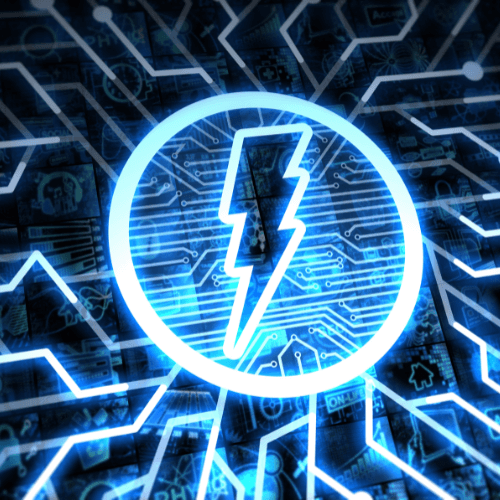
Class 4 Electrical Fault Managed Power Can Benefit Your Business
While Class 4 power circuitry is relatively new, don’t knock it just yet. You should still consider why class 4 electrical fault managed power can benefit your business if you manage a system that can incur electrical faults.
In case you’re unfamiliar with the broader aspects of Class 4 electrical fault managed power systems, we’ve put together this blog post to share some details on these systems.
Learn about their uses and what an electrical fault is to understand their full benefits. See how you can elevate the electrical wiring of your Class 4 fault managed power system with Remee!
What Is a Fault Managed Power System?
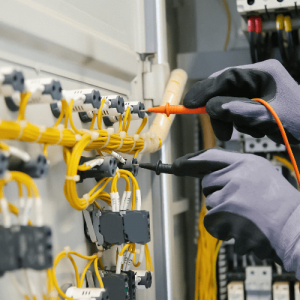 A Fault Managed Power System (or FMPS for short) is a power system that can detect and respond to an electrical fault or failure within a power system to maintain continuous and reliable power distribution.
A Fault Managed Power System (or FMPS for short) is a power system that can detect and respond to an electrical fault or failure within a power system to maintain continuous and reliable power distribution.
The purpose of fault management systems is to lessen or eliminate the impact of electrical faults on the power system and the equipment it powers in critical power applications. Examples could be in data centers, government systems, hospitals, and other mission-critical facilities, where a power outage or electrical fault even for a short amount of time could have severe consequences.
So how does it work? Specialized sensors, switches, and control systems usually handle the electrical fault detection and response in a fault management system. These tools can detect changes or uneven patterns in voltage, current, or other areas of a power system.
Electrical fault management systems are designed to detect, isolate, and control faults that may occur in power systems. There are four main types of fault managed power systems:
- Standby Systems: These systems are designed to provide backup power in the event of an electrical fault or outage in the primary power source. Standby systems may include backup generators, batteries, or uninterruptible power supplies (UPS) to provide power during the fault.
- Emergency Systems: Emergency power systems are designed to provide power to critical loads during an emergency, such as a natural disaster or power outage. These systems may include backup generators, batteries, or UPS to provide power to critical equipment, such as hospitals or emergency response centers.
- Redundant Systems: Redundant power systems are designed to provide backup power in the event of a fault or failure in the primary power source. These systems may include backup generators, parallel switchgear, or other redundancy options to ensure continuous power supply.
- Load Shedding Systems: Load shedding systems are designed to automatically shed non-critical loads in the event of an electrical fault or overload in the power system. These systems may include relays, sensors, or software to monitor the power system and shed non-essential loads to prevent a complete system shutdown.
As an electrical fault is detected, the system responds to isolate the fault, often by rerouting the electrical power around the faulted component or disconnecting it entirely. By quickly detecting and responding to faults, fault management systems can help to minimize downtime, prevent damage to equipment, and ensure the safety of personnel and property.
What Is a Class 4 Fault Managed Power System?
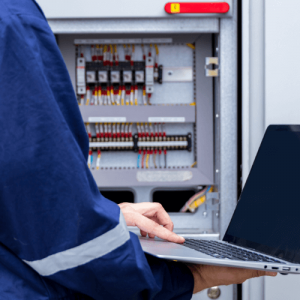 To better understand this designation, below are the classes of electrical code from The National Electrical Code (NEC), which are updated every three years to take new technologies and safety standards into account.
To better understand this designation, below are the classes of electrical code from The National Electrical Code (NEC), which are updated every three years to take new technologies and safety standards into account.
Class 1: Power-limited circuits
This limited power circuit works within a high power range of up to 30 volts and 1500 watts. There is a power limit of 600 volts. Class 1 circuits come with some risk of electrical shock or fire, and only certified electricians should handle these circuits.
Class 2: Low-energy power circuits
These are low-voltage circuits (usually under 60 volts) designed to deliver power at low voltage rates to uses like fire alarms, doorbells, security systems, and signaling circuits.
Class 3: High-energy power circuits
Class 3 circuits deliver power at higher voltage rates (between 60-150 volts) and energy levels than Class 2 low-energy power circuits. This power produces energy in audio systems, intercom systems, and closed-circuit TV systems, for example.
Now that you have a handle on the basics of the classes of fault managed power systems, let’s walk you through a Class 4 Fault Managed Power System.
Class 4: Fault Managed Power System
The National Electrical Code recently introduced a new power circuit for Class 4 power in fault management systems. Class 4 power circuits are defined as power circuits that are designed to detect, isolate, and control electrical faults that may occur within the circuit.
Class 4 power circuits are required to have at least two levels of fault isolation and are required to use a combination of software, hardware, and communication protocols to detect, diagnose, and manage faults. These systems must also have a fail-safe mechanism that ensures continuous power supply to critical loads in the event of a fault or outage.
The Class 4 designation of a fault managed power system means that the power system is designed for very high-energy power circuits. This is meant for critical high-energy electrical applications, using power at 150 volts and higher.
Plus, Class 4 fault managed power systems aren’t limited to the source like Class 2 and Class 3 systems. And Class 4 power cabling solutions have many more advantages than that!
Benefits of Using a Class 4 Fault Managed Electrical Power System
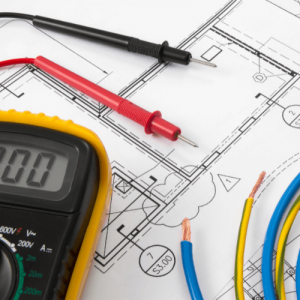 The use of Class 4 power circuits provides an essential tool for ensuring the availability of critical power supplies and reducing the risks associated with power outages and faults. Here are some of the benefits of using Class 4 fault managed power systems:
The use of Class 4 power circuits provides an essential tool for ensuring the availability of critical power supplies and reducing the risks associated with power outages and faults. Here are some of the benefits of using Class 4 fault managed power systems:
- More adaptability: Class 4 fault management systems are more flexible and have room to scale. Class 4 power applications are designed for a wide range of power loads and configurations, and, as power demands change, they can be scaled up or down.
- Increased reliability: Class 4 power circuits are designed to provide greater electrical fault detection and isolation capabilities than previous classes. This increased reliability helps to ensure that critical power supplies remain available in the event of a fault.
- Improved safety: Fault managed power systems are essential for critical facilities such as hospitals and emergency response centers. Class 4 power circuits provide an extra level of safety, reducing the risk of injury or loss of life in the event of a power outage.
- Reduced downtime: The use of Class 4 power circuits can minimize downtime in critical applications. By quickly detecting and isolating faults, these systems can help to reduce the time needed for repairs and maintenance, keeping essential services running smoothly.
- Increased efficiency: Due to their advanced monitoring and control capabilities, Class 4 power systems lead to more efficient operation. These elements help the system optimize power distribution, reduce energy waste, and lower costs.
- Compliance: The introduction of Class 4 in the NEC ensures that electrical contractors, engineers, and facility managers are aware of the latest standards for fault managed power systems. This ensures that these systems are designed and installed to the highest safety and reliability standards.
Using Class 4 fault managed power systems gives operations a competitive advantage in critical high-power applications. These systems work better but need careful design, implementation, and maintenance as well to secure the proper functionality.
While Class 4 power fault management systems are the latest and greatest for power cabling, new cable solutions are being made every day. Make sure you stay up-to-date with Remee’s newsletter – sign up now!
Use Remee’s Activate™ PowerPipe™ Cabling Solution for Class 4 Power Electrical Fault Management Systems
Remee’s Activate™ PowerPipe™ cables are a cost-effective and resilient power cabling solution for distributed electronics that meet the new NEC Class 4 standard for fault managed power systems. This technology allows for controlled power distribution that is safe, less expensive, faster to install, and supports growing digital power technologies such as those required in smart buildings.
PowerPipe™ cables deliver nearly 20 times the power of PoE over hundreds of meters while using low-voltage pathways and wiring practices. It leverages pulse transmission to deliver significant power over long distances, similar to how data packets travel over enterprise networks. And, like PoE, single cable construction requires only one cable pull, saving installation time and expense.
This innovative technology leverages pulse transmission to deliver significant power over long distances, in a similar manner as data packets travel over enterprise networks. As a line powering system, it is a means of energizing remote equipment from a centralized location over copper twisted pairs or hybrid cables with Class 4 fault managed power.
Line conditions are continuously monitored by transmitters and receivers. If there is a fault such as improper wiring, a short circuit, or a person touching the transmission lines, the system recognizes the condition in milliseconds and halts the transmission of power. The result is touch-safe electrical transmission at high power levels. This “clean power” also eliminates sags and surges.
Remee’s Activate™ PowerPipe™ cables are an innovative and compliant solution for Class 4 fault managed power systems that offer convenience, safety, and cost-effectiveness for powering remote equipment from a centralized location.
Want to know more? Take a further look at Remee’s line of Activate™ PowerPipe™ cables with our detailed spec sheets.
Also, check out Remee’s case study and learn about their solution using VoltServer’s Digital Electricity™ for a major metro rail system using Activate™ PowerPipe™ cables.
Choose the Best Class 4 Fault Managed Powered Cabling for Your System
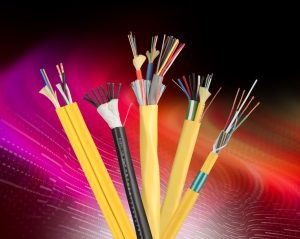 At Remee, knowing cabling is our specialty. It’s a given to know that we’ve done our homework around Class 4 Fault Managed Power Systems.
At Remee, knowing cabling is our specialty. It’s a given to know that we’ve done our homework around Class 4 Fault Managed Power Systems.
Each of the PowerPipe™ cables in Remee’s Activate™ line has a 300V rating for pulse power transmission. PowerPipe™ cable selections include:
- Multipair Cables – 18, 16 and 14 AWG, unshielded, in Plenum, Riser and Direct Burial versions
- Multipair Cables – 18 and 16 AWG, unshielded, wet location, LSZH insulation & jacket
- Multipair Cables – 18 and 16 AWG, overall shielded, Direct Burial
- Micro Fiber Distribution Hybrid Cables – 18 and 16 AWG, SM OS2, FR-PVC jacket
- Hybrid Cables – 18, 16 and 14 AWG, SM OS2, CMP/OFNP with Remguard™ jacket, CMR/OFNR with FR-PVC jacket
- Hybrid Cables – 16 AWG, SM OS2, wet location, LSZH insulation & jacket
Activate™ PowerPipe™ cables are suitable for indoor and outdoor Class 4 fault managed power systems, including Digital Electricity™ applications such as:
- DAS
- DRAN
- Small cell
- PoE
- LED lighting systems
- Security cameras
- GPON
- ODAS
- Data Centers
- Wireless Access Points (WAPs)
- BAS
- Rooftop macro
- Intelligent building
- Indoor agriculture
- IoT sensors
Visit our site to see how Remee’s PowerPipe™ product line and the entire line of Activate™ Powered Cabling Solutions can power your project. It’s Remee’s answer to the future of power and data distribution in the new power distribution cable revolution. Contact us today to learn more!